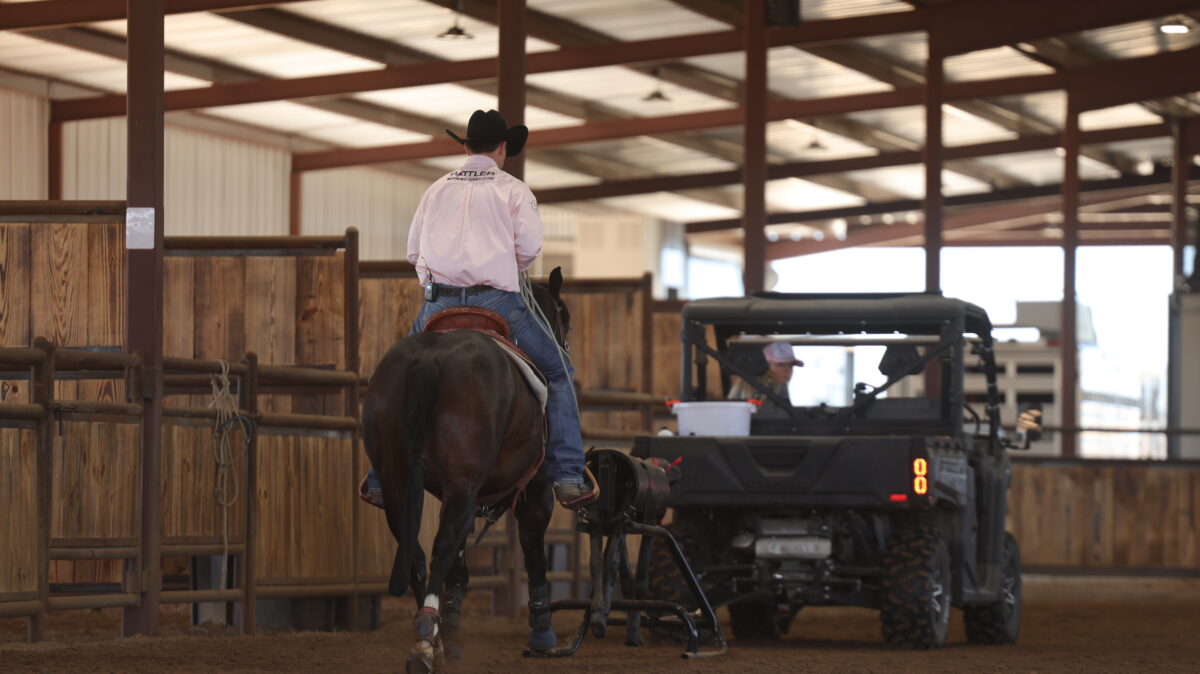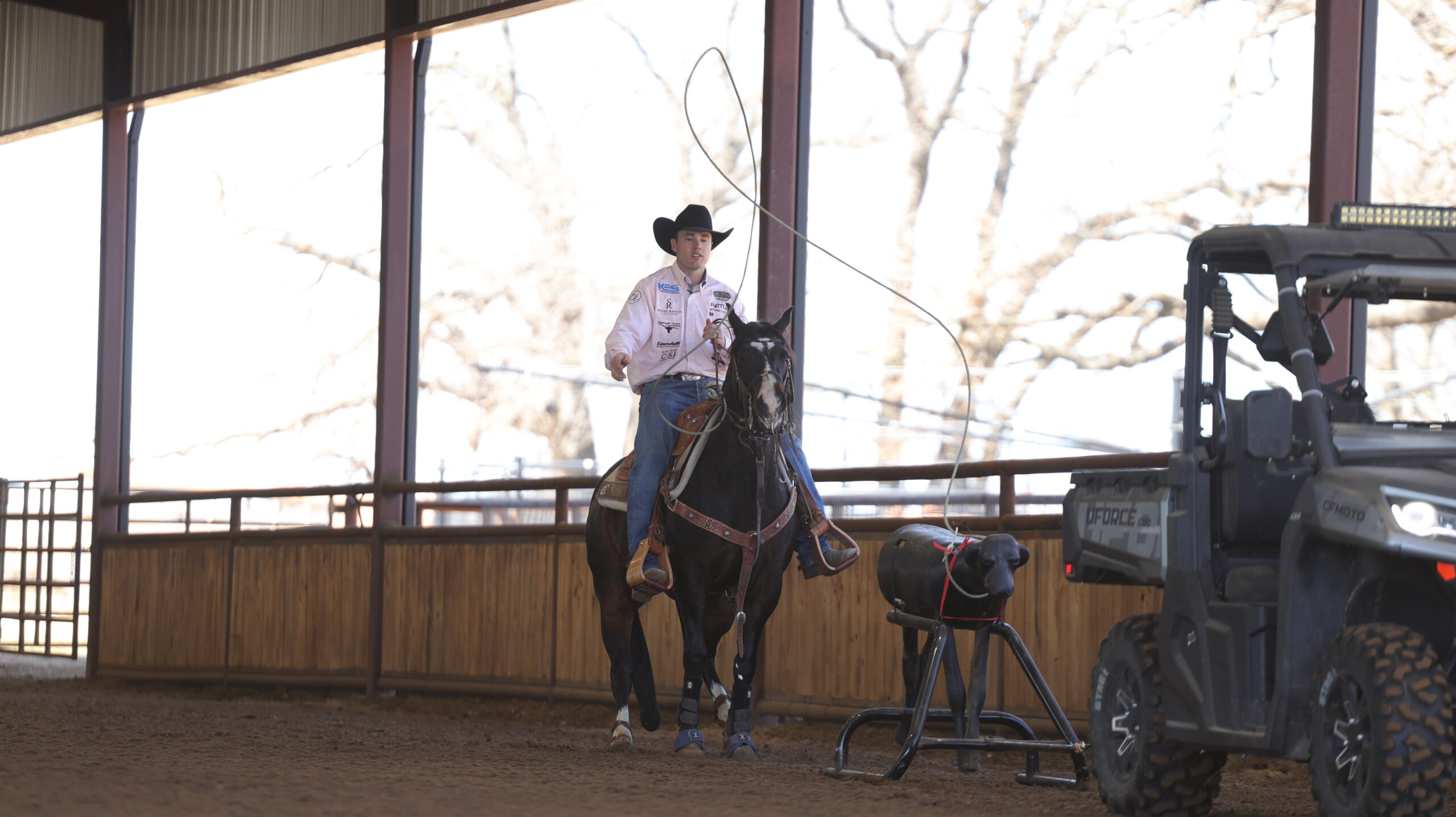With Tie-Down Roper and Roping.com Coach Blane Cox
If you’re trying to bring a young horse along—or just sharpen the timing and balance on one that’s been sitting—understanding “feel” in the bridle and dialing in your position behind the dummy is where it all starts.
In this session, Blane Cox walks through how he uses pressure and release to teach a horse to stay soft and responsive—and how he decides exactly where he wants that horse to stop behind the dummy.
What Does “Feel” in the Bridle Mean?
Feel isn’t about pulling harder. It’s about getting your horse to respond when you ask, and rewarding them the second they do. Whether you’re backing one up or asking for a stop, feel is what tells you your horse is working with you—not against you.
“If I’m asking him to back up and he gives to me in the bridle, that’s where I release,” Blane says. “It’s not just about speed—it’s how he feels in my hand.”

How to Use Pressure and Release
When Blane ropes the dummy, he’s not just thinking about the throw—he’s training the horse every step after.
- If the horse stops and pulls on the bit, Blane bumps with his fingers and uses a little leg to ask for more effort.
- As soon as the horse gives, softens in the bridle, and backs up with energy—he releases.
“The second they give, I let go. That’s how they learn what you’re asking for.”
If the horse slows back down or braces again, he simply repeats: pressure, response, release.
How Hard Should You Pull?
Not every horse is the same. Some are naturally soft-mouthed, others are heavier and might need a little more bit or a firmer hand.
“It’s trial and error,” Blane explains. “Some horses I’ll use a lighter bit and get more handsy. Others need a little more in the bridle.”
The goal is not to pull constantly, just enough to ask for something, then release when the horse gives it.
Ideal Position Behind the Dummy
Position is mostly about what works for you and your horse, but here’s how Blane approaches it:
- Distance: 8 to 10 feet behind the dummy is the sweet spot
- Too close: The horse might step on or overrun the dummy
- Too far: You end up reaching and falling out of your seat
“I like one that wants to run close and stop quick,” Blane says. “Then get back out of there fast.”
If you or your horse are new to it, start slow and find the distance where you can deliver a clean rope without forcing it.

Why This Matters
Whether you’re seasoning a colt or fine-tuning a finished horse, this combo—feel in the bridle + controlled position on the dummy—sets the tone for everything you’ll do in live runs.
- Keeps your horse light and responsive
- Builds consistency on the rope
- Prevents fights in the box or on the stop
- Creates a horse that works with you, not ahead of you
Final Tip from Blane:
“The more you ride, the more you figure it out. Some horses want to go past it, some want to get tight—but if you listen to them and stay consistent, they’ll figure out what you want.”
Join Roping.com Today
From short, one-minute roping tips to hours of full-length training sessions from World Champions like Jake Barnes, Lari Dee Guy, Shad Mayfield, Clay O’Brien Cooper, Caleb Smidt, and Patrick Smith, Roping.com is the ultimate experience for every type of roper. As the exclusive home of Trevor Brazile and Miles Baker’s Relentless Remuda and the Richards’ A&C Racing and Roping, Roping.com is also the best rope-horse training resource in the industry. Start your free trial today. Click here.
If you liked this article, here are more recommended ‘how-to” articles:
–


